In this article, we look at the 15 best spotting scopes for bird photography. [Note: ExpertPhotography is supported by readers. Product links on ExpertPhotography are referral links. If you use one of these and buy something, we make a little money. Need more info? See how it all works here.]
The Top Spotting Scope for Bird Photography
Here’s our selection of the best spotting scopes. The ones at the top of the list tend to be the most expensive. But you get what you pay for! It might help to understand some numerology. Spotting scope listings generally have three numbers. When you see a 20-60×80 scope, it means the following:
The scope can zoom from 20-60x magnification. The objective lens has a diameter of 80mm.
Go to the end of the list for what to look for in a spotting scope (terminology).
15. Vortex Diamondback 20-60x85mm Spotting Scope (Straight or Angled)
Magnification: 20-60x Objective diameter: 85mm Field of view at 1000m: 32m at 20x, 15.5m at 60x Eyepiece: Straight or angled Closest focusing distance: 6.6m Eye relief: 20-16.5mm Weight: 1320g Length: 390mm
The Vortex Diamondback is an entry-level scope. But the new 85mm version still has a wide aperture for low-light situations. And it has an extended magnification range to allow scanning and detailed observation. It comes with either a straight or angled body and a handy view-through case. Plus, it has a lifetime warranty. It offers free repair or replacement, whatever the cause! Strengths:
Multi-coated glass and dielectric prism coatings for improved brightness Waterproof due to O-ring seals Fog-proof nitrogen-purged design Built-in sunshade Adjustable eyecups Rotating tripod ring for sideways viewing angle ArmorTek scratch-resistant coating Durable View-through carry case Vortex VIP Warranty
Weaknesses:
Not the greatest optics
14. Vortex Razor HD 27-60x85mm Spotting Scope
Magnification: 27-60x Objective diameter: 85mm Field of view at 1000m: 35.7m at 27x, 20.7m at 60x Eyepiece: Angled or straight Closest focusing distance: 5m Eye relief: 17-16.7mm Weight: 1860g Length: 394mm
The Razor HD is Vortex’s top-end scope that comes at twice the price of the Viper. But it boasts a large 85mm aperture to guarantee brightness. And it has extra-low dispersion (ED) glass for clarity and index-matched lenses for color correction. The glass also has an anti-reflective coating to boost light transmission in low-light conditions. Strengths:
O-ring seals for waterproof and dustproof design Argon gas purging prevents fogging Built-in sunshade Smooth focus dial Rotating tripod ring compatible with Arca-Swiss tripod heads for a flexible viewing angle ArmorTek scratch-resistant coating It comes with a neoprene fitted cover Vortex VIP Warranty
Weaknesses:
Expensive
13. Sig Sauer Oscar 8 Spotting Scope
Magnification: 27-55x Objective diameter: 80mm Field of view at 1000m: 35m at 27x, 24.3m at 55x Eyepiece: Angled Closest focusing distance: 5m Eye relief: 17-16mm Weight: 1900g Length: 381mm
Sig Sauer is probably better known for its guns than its spotting scopes. But the Oscar 8 offers excellent optical standards in a solidly built device that feels good in your hands. It’s designed for tripod viewing, so it doesn’t have the Oscar 3’s image stabilization. But the payoff is that the ED and HT glass offer excellent imaging quality, even up to 650 yards. Strengths:
Extra-low dispersion (ED) and high transmittance (HT) glass Waterproof and fog proof Removable eyepiece Incredible clarity Smooth focusing It comes with a neoprene fitted cover
Weaknesses:
Heavy No straight eyepiece is available
12. Maven S.2 12-27x56mm Spotting Scope
Magnification: 27-60x Objective diameter: 85mm Field of view at 1000m: 35.7m at 27x, 20.7m at 60x Eyepiece: Straight Closest focusing distance: 5m Eye relief: 17-16.7mm Weight: 1860g Length: 394mm
The Maven S.2 is a rugged but modern-looking straight-line scope. It has edge-to-edge clarity and smooth focusing—even when wearing gloves. It doesn’t have the wide aperture or magnification range of other scopes. But it makes up for that with multi-coated fluorite glass for reduced chromatic aberration and weight. Strengths:
Fluorite glass and multi-coated lenses for sharpness and high-contrast images O-ring sealed and nitrogen-filled to prevent internal fogging Smooth and user-friendly magnification and focus dials Lightweight Durable A Custom Optics Builder and engraving option lets you customize the look
Weaknesses:
Low magnification An angled eyepiece is not available
11. Athlon Talos 20-60x80mm Spotter Scope
Magnification: 20-60x Objective diameter: 80mm Field of view at 1000m: 25.3m at 20x, 14.6m at 60x Eyepiece: Angled Closest focusing distance: 6m Eye relief: 17.8-15.2mm Weight: 1091g Length: 419mm
The Athlon is a budget spotting scope that offers a wide objective lens and a good magnification range. It competes with Vortex but at a lower price point. And this is the cheapest model in their line-up. However, the resolution, brightness, and color rendition are excellent. But there is slight color fringing visible at 60x. Strengths:
Multi-coated lenses and silver-coated K9 prisms for clarity and brightness Waterproof and nitrogen-purged to prevent internal fogging and improve thermal stability Built-in sunshade Telescoping eyecup Rotating (removable) eyepiece for a flexible viewing angle Butter-smooth focusing ring The magnification wheel turns smoothly and allows easy digiscoping as the eyepiece itself stays still Lightweight Comes with carrying bag, bench-height tripod Vibrant colors
Weaknesses:
Not rugged enough for backcountry hiking Slight color fringing Eye relief may not be enough at higher magnifications if you wear glasses No straight eyepiece is available
10. Celestron Ultima 80 Spotting Scope (Straight or Angled)
Magnification: 20-60x Objective diameter: 80mm Field of view at 1000m: 35m at 20x, 18m at 60x Eyepiece: Straight or Angled Closest focusing distance: 8m Eye relief: 18-15mm Weight: 1616g Length: 490mm
The Celestron is packed with features despite the low price. It has a large objective lens, wide-zoom range, waterproof housing, and a soft view-through carrying case that comes with it. The step up in aperture from the 65mm Ultima 65 offers a 50% brighter image. But the absence of ED glass elements leads to an annoying lack of clarity and obvious chromatic aberration at higher zoom levels. That makes this unsuitable for bird photography or wildlife photography. Strengths:
Multi-coated lenses Waterproof Easy adjustment of focus and eyepiece T-mount adapter for DSLR cameras View-through carrying case Available Smartphone adapter for taking pictures with your camera phone
Weaknesses:
Color fringing and poor clarity at higher magnifications Color fringing Eye relief may not be enough at higher magnifications if you wear glasses
9. Gosky 20-60×80 BAK 4 Spotting Scope
Magnification: 20-60x Objective diameter: 80mm Field of view at 1000m: 35m at 20x, 18m at 60x Eyepiece: Angled Closest focusing distance: 8m Eye relief: 18-15mm Weight: 2410g Length: 490mm
The Gosky is a good-value scope that ticks all the boxes regarding aperture, magnification range, and build quality. It also comes with a digiscoping adapter that lets you take pictures with your smartphone. The only problem is the degradation in visual quality at maximum zoom. But that’s not surprising at this price point. Strengths:
Great value Smartphone adapter Waterproof
Weaknesses:
Chromatic aberration and softness at 60x No straight eyepiece is available
8. Bushnell Trophy Extreme 20-60×65 Spotting Scope
Magnification: 20-60x Objective diameter: 65mm Field of view at 1000m: 50m at 20x, 17m at 60x Eyepiece: Angled Closest focusing distance: 6.1m Eye relief: 18mm Weight: 1034g Length: 381mm
It’s an updated version of the Bushnell prime scope. The slightly smaller objective lens on the Bushnell means it’s pretty light. But that comes at a price. You don’t get the same sharpness as more expensive scopes. However, the magnification range is good. And it comes with a rotating mount that locks with a thumbscrew to give you a choice of viewing angles. Strengths:
Waterproof and all-weather construction with O-ring sealing Anti-reflective coating for bright and high-contrast images Built-in sunshade Rotating mount for flexible viewing angle Rugged build with black rubber armor Lightweight Includes travel tripod and bag
Weaknesses:
Lacks sharpness
7. Celestron Regal M2 20-60x80ED Spotting Scope
Magnification: 16-48x Objective diameter: 80mm Field of view at 1000m: 43m at 16x, 23m at 48x Eyepiece: Angled Closest focusing distance: 6.5m Eye relief: 20mm Weight: 1607g Length: 422mm
This feature-packed scope is also available with a 65mm or 100mm aperture. It contains ED glass to improve imaging quality (resolution, contrast, and color fidelity). And it has a BaK4 roof prism to gather more light and add clarity. It also uses the same coatings as Celestron’s observatory-grade telescopes to maximize light transmission and sharpness. The eye relief is generous if you wear glasses, and the dual-focus system is convenient if you’re photographing birds. The magnesium alloy body means it’s 14% lighter than the previous model. But it’s still too heavy to use without a tripod—which you’ll have to buy yourself! Strengths:
XLT multi-coated optics to maximize light transmission Extra-low dispersion (ED) glass for reduced chromatic aberration Waterproof and nitrogen-purged for anti-fogging Adjustable lens shade Twist-up eyecup Compatible with standard 1.25″ astronomical eyepieces for observing the planets 2x faster dual-focus mechanism Rotating mount for flexible viewing angle Integrated tripod mount T-mount adapter for DSLR View-through case Durable
Weaknesses:
Too heavy to use without a tripod No tripod included No straight eyepiece is available A basic warranty doesn’t cover loss, theft, or cosmetic damage
6 . Vortex Viper HD 20-60×85 Spotting Scope (Straight or Angled)
Magnification: 20-60x Objective diameter: 85mm Field of view at 1000m: 32m at 20x, 15m at 60x Eyepiece: Straight or angled Closest focusing distance: 10.97m Eye relief: 19.6-17.8mm Weight: 2172g Length: 485mm
The Vortex Viper is among the heaviest spotting scopes on this list. But the brighter and larger objective lens and HD glass elements provide excellent color rendition, low-light performance, and edge-to-edge sharpness, even when spotting subjects up to a mile away. Focusing is convenient as the ring is part of the scope’s body (like on a camera lens). Strengths:
HD glass elements for clarity and contrast Fogproof and waterproof Built-in sunshade Rugged build Rubberized AmorTek coating makes it grippy Vortex VIP Warranty
Weaknesses:
Heavy Bulky
5 . Celestron Ultima 100 Spotting Scope (Straight or Angled)
Magnification: 22-66x Objective diameter: 100mm Field of view at 1000m: 94m at 22x, 52m at 66x Eyepiece: Straight or angled Closest focusing distance: 10m Eye relief: 18-15mm Weight: 2kg Length: 559mm
The weight of this versatile scope might be too much for some. But the payoff is that you get a bright 100mm aperture with a maximum magnification of 66x. Both are also ideal for stargazing. It also offers 50% more brightness than the 80mm model. That makes it much more useful in low-light conditions. But the image quality deteriorates at maximum magnification, as you might expect. Strengths:
Large aperture Multi-coated optics Portable Durable Includes soft carrying case
Weaknesses:
Heavy Bulky Poor close focus distance
4 . Nikon Fieldscope ED50 (Straight or Angled)
Magnification: Depends on the eyepiece Objective diameter: 50mm Field of view at 1000m: 52m at 13x Eyepiece: Straight or Angled Closest focusing distance: 3m Eye relief: 14.1mm at 13x Weight: 455g Length: 209mm
This model from Nikon doesn’t have the largest aperture. But it’s a very compact and portable spotting scope that boasts comprehensive weatherproofing. However, sometimes it doesn’t include an eyepiece. The magnification will depend on where you decide to buy it. Strengths:
Extra-low dispersion glass elements to reduce chromatic aberration Waterproof (up to one meter for five minutes) Nitrogen-filled to prevent fogging Multi-coated lens to improve resolution and transmission of light Light and small enough to be used handheld
Weaknesses:
Small aperture A falloff in brightness and clarity above 30x magnification The eyepiece may not be included
3 . Leica APO-Televid 82 Spotting Scope (Body Only)
Magnification: 25-50x eyepiece (sold separately) Objective diameter: 82mm Field of view at 1000m: 40m at 25x, 26m at 50x Eyepiece: Angled Closest focusing distance: 3.8m Eye relief: 18mm Weight: 1520g Length: 313mm
If you’re a photographer, then you probably know Leica’s reputation for producing high-quality glass—at a price. This scope lives up to that reputation with crystal-clear imaging. The scope has an angled body and a wide-angle design that gives better peripheral vision even at high magnifications. The zoom range is slightly shortened not to compromise the imaging quality. But a 1.8x multiplier is available if you need the extra reach. Strengths:
Apochromatic glass for correcting chromatic and spherical aberration Nitrogen-filled to prevent fogging Large field of view Adjustable eyecups for viewing with or without glasses Fluoride coating improves the transmission of light by 6% Razor-sharp Two knobs for rough and fine focusing 1.8x multiplier available Good in low light AquaDura lens coating repels water and dirt Extendable lens hood Durable
Weaknesses:
Expensive Heavy enough to need a sturdy tripod Bulky You need to buy the eyepiece separately
2 . Swarovski A/STS-80 HD Spotting Scope (Straight or Angled)
Magnification: 20-60x eyepiece Objective diameter: 80mm Field of view at 1000m: 20m at 60x Eyepiece: Straight or angled Closest focusing distance: 3m Eye relief: 17mm Weight: 1370g Length: 400mm
Swarovski is one of the top brands for binoculars and spotting scopes. And this model doesn’t disappoint. It offers bright, crystal-clear imaging from edge to edge with natural color rendition. It’s very lightweight due to its magnesium alloy construction. Plus, it’s easy to use for bird photography and wildlife photography. You can also buy a 25-50x eyepiece as well. Strengths:
Waterproof to 4m Sharp imaging Smooth helical focusing Well-built Light Shockproof Easy to use for digiscoping Natural color
Weaknesses:
It needs major refocusing when zooming
1. Kowa TSN-883/4 Prominar Fluorite Spotting Scope (Straight or Angled – Body Only)
Magnification: Depends on eyepiece (25-60x wide zoom, 30x wide, or 25x long eye relief) Objective diameter: 88mm Field of view at 1000m: 38.4m at 20x, 19.3m at 60x Eyepiece: Straight or angled Closest focusing distance: 5m Eye relief: 17-16.5mm (for 20-60x eyepiece) Weight: 1520g Length: 343mm
You might expect Swarovski or Leica to offer the best spotting scope on the market, but we think it’s Kowa instead! The TSN-883/4 is an optical masterpiece. It’s a high-quality spotting scope with ultra-low dispersion, pure fluorite crystal glass. It guarantees exceptionally bright, contrasty, pin-sharp viewing with minimal chromatic aberration. Strengths:
XD lenses for clarity and minimal chromatic aberration Waterproof Dry nitrogen-filled to prevent fogging Sharp across the entire field of view 99% light transmission leads to outstanding low-light performance Twist-up eyecups Built-in lens hood Protective filter Smooth dual-focus system Good close focus Excellent color rendition Rotating mount for flexible viewing angle View-through case Bird photography is possible with Micro Four Thirds and smartphone adapters
Weaknesses:
Slight color fringing
What to Look for in Spotting Scopes (Terminology)
Here are some factors to consider when choosing the best spotting scope:
Magnification range—20-40x probably provides the best field of view and brightness for bird watching. But 20-60x spotting scopes are typical. Make sure the optical quality doesn’t degrade too much at higher magnifications. Closest focusing distance—The closest distance you can focus on your subject. It can be just as crucial for spotting scopes as for camera lenses. For instance, you might want to get a close-up view of a bird’s feathers to identify the species. However, there is a trade-off with magnification. So be sure to check both. Glass and coatings—Spotting scopes with ED (extra-low dispersion), FL (fluorite), HD (high density), and APO (apochromatic) glass produce clearer, sharper images. It, in turn, reduces eyestrain. Field of view—This shows the visible width at 1,000 yards (or meters). A wide field of view is better for scanning the scene or for fast-moving birds, but you won’t get the same level of magnification. Focus mechanism—Most scopes have a single focus knob. But Leicas have one for coarse focus and one for more precise tuning. Nikon and Swarovski scopes have a helical focusing system with a rubberized band on the actual barrel or eyepiece. The latter’s reduced “travel” is less accurate. But that makes it faster to switch from close to distant subjects or keep the focus on fast-moving birds. Straight or angled spotting scope—Straight scopes have a more familiar feel. But an angled scope is better for looking at the stars or sitting down and sharing! Eyepieces—Some spotting scopes come with multiple eyepieces. The idea is you can use the lower-magnification ones with a broader field of view to scan the scene. Then you can switch to a higher-magnification eyepiece to examine your subject in detail. Alternatively, you could just zoom in using the same eyepiece. Objective lens size—Normally 50-80mm. A bigger front lens (or “aperture”) gathers more light. And so, the latter produces more clarity and detail and a brighter image. Exit pupil size—This measures the image’s brightness and should be at least 1.3mm (or the diameter of your pupil). It’s the objective lens diameter divided by the magnification. So a 20-60x scope with an 80mm objective lens would have an exit pupil of 1.33mm at 60x, which is fine. Eye relief—The ideal distance between your eye and the eyepiece. It should be at least 16mm if you wear glasses. Weather sealing—Fog, rain, snow, dust, heat, and cold can all be problematic. So look for waterproof and anti-fog (nitrogen- or dry-gas-filled) models with rubber coatings. Weight—Higher-magnification scopes are generally heavier. But they may save you hours of hiking, so it’s a trade-off! Price—Obviously…
Spotting Scope Accessories
All these scopes are powerful, so you might want a tripod to hold them steady. That is unless you spend a lot of time in a jeep on safari! It doesn’t have to be that sophisticated or expensive, though. If you want to take pictures or videos of what you can see (called “digiscoping”), you could also invest in a Tactacam Spotter LR. It is a camera attachment that fits onto the eyepiece. It boasts one-touch 4K recording capability (plus live streaming), slow-motion features, and durable rubber housing.
Conclusion
The best spotting scope is generally the best you can afford! There’s a price to be paid for the very best optical quality offered by Kowa, Swarovski, or Leica. But all the angled scopes and straight scopes on this list are packed with helpful features:
High magnification Low-light ability A choice of eyepieces Rotating tripod mounts Weather sealing
They also come with useful accessories such as tripods, T-ring adapters for digiscoping, and a view-through carrying bag. You can’t go wrong with any of the choices on this list, so the choice is yours. Try out our Wonderful Wildlife e-book to test out your new spotting scope!
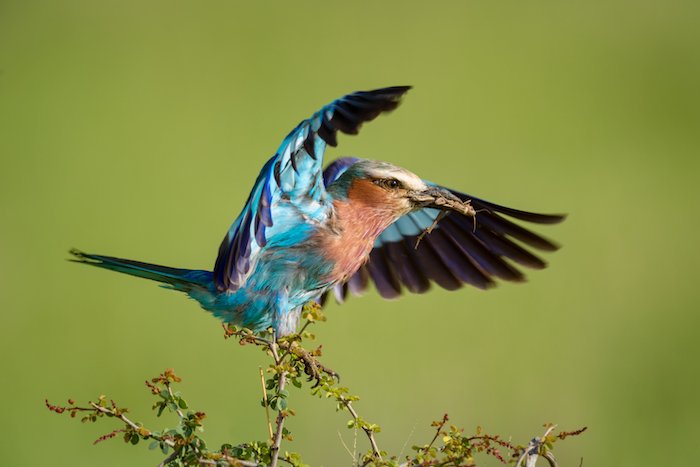

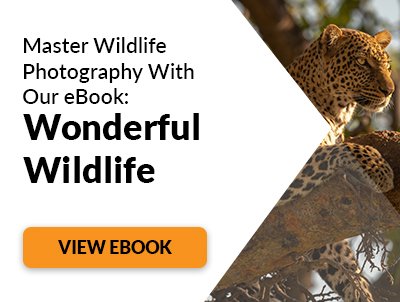
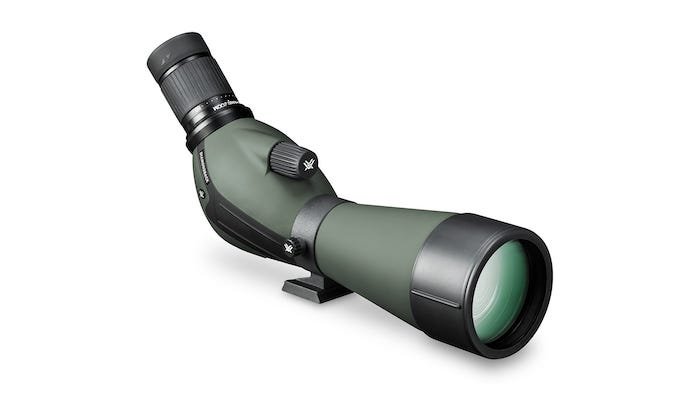
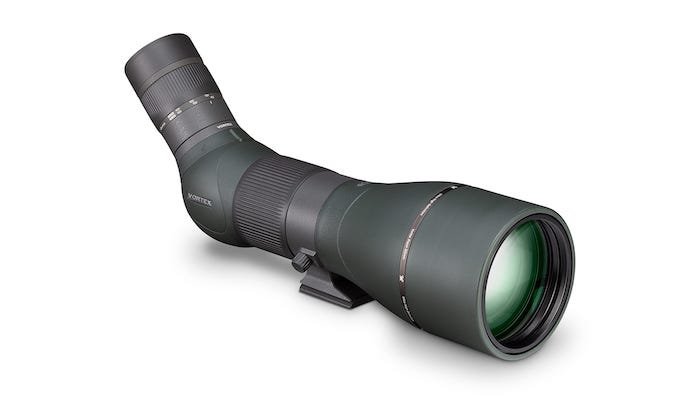

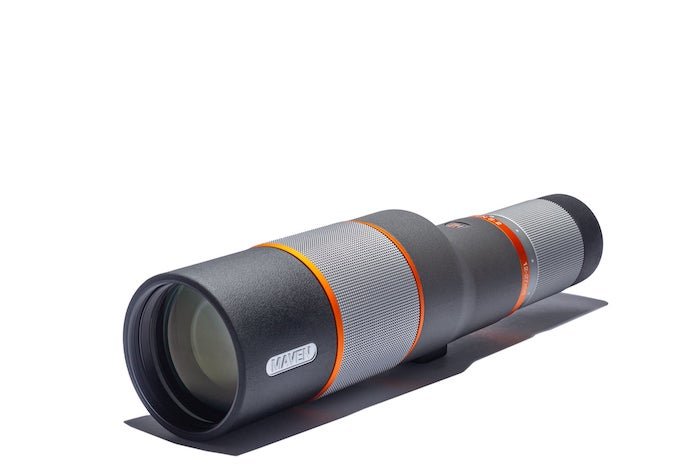
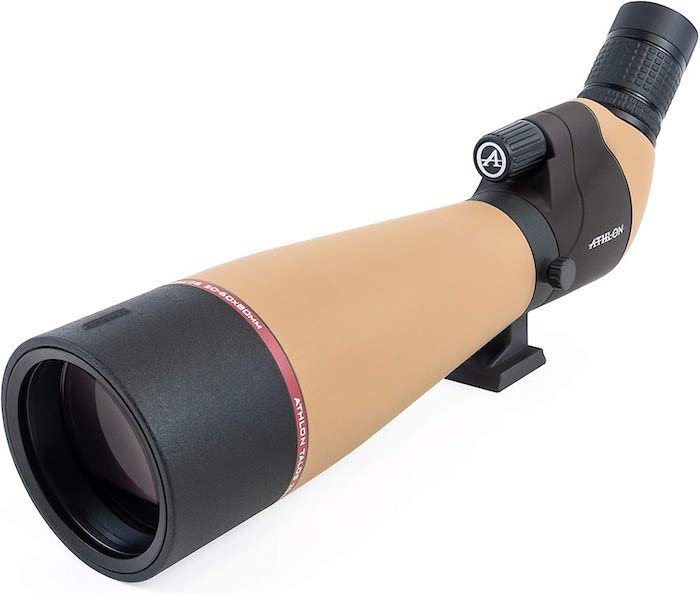

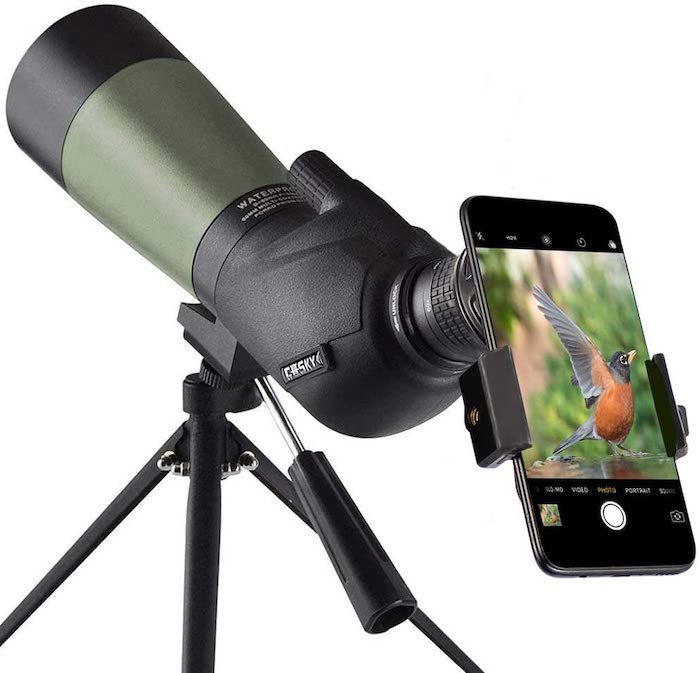


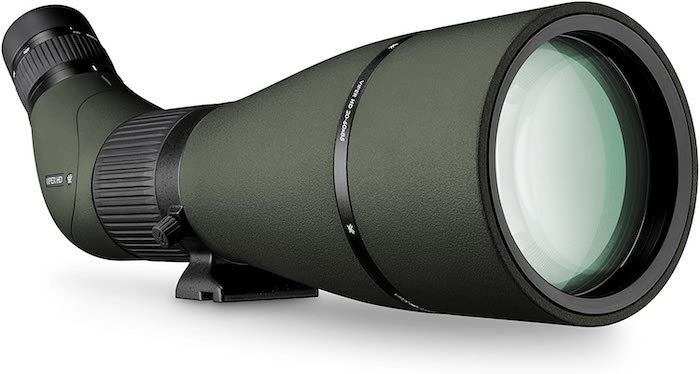
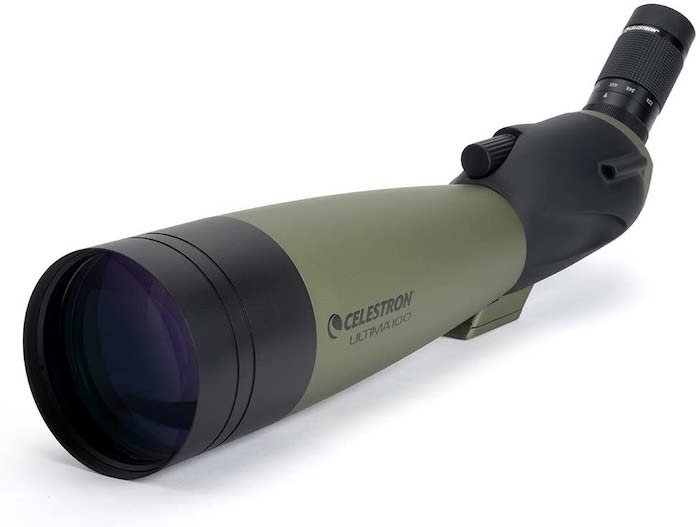
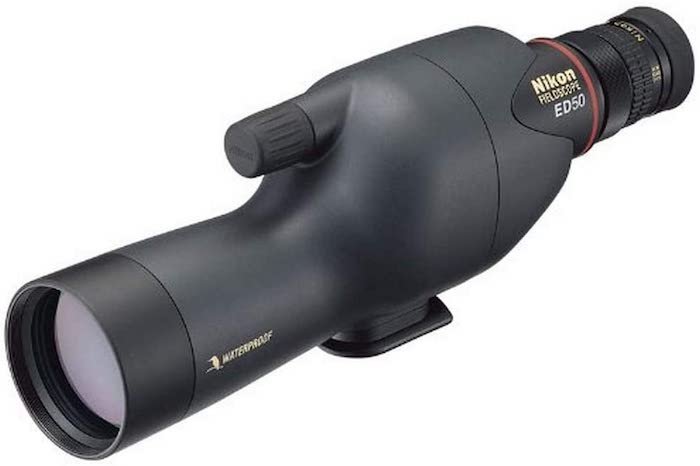
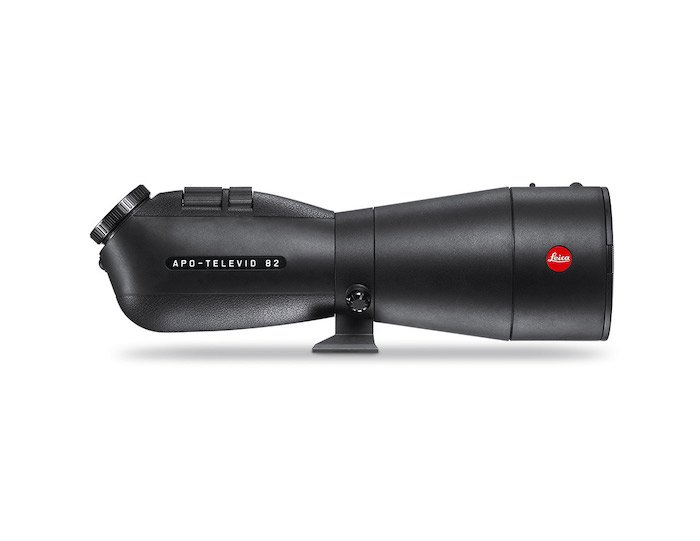
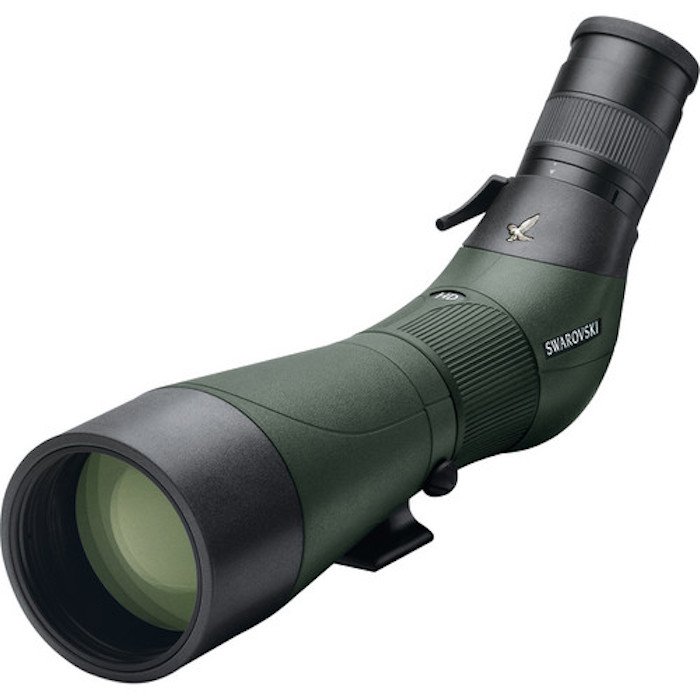

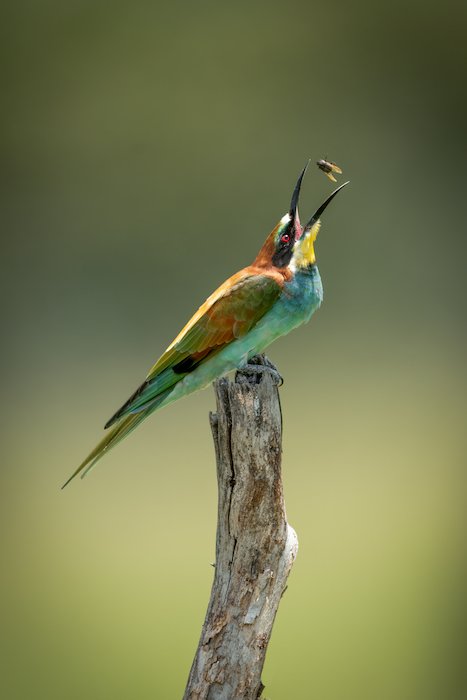
title: “15 Best Spotting Scope For Bird Photography In 2023” ShowToc: true date: “2023-02-25” author: “Patrick Hawkins”
In this article, we look at the 15 best spotting scopes for bird photography. [Note: ExpertPhotography is supported by readers. Product links on ExpertPhotography are referral links. If you use one of these and buy something, we make a little money. Need more info? See how it all works here.]
The Top Spotting Scope for Bird Photography
Here’s our selection of the best spotting scopes. The ones at the top of the list tend to be the most expensive. But you get what you pay for! It might help to understand some numerology. Spotting scope listings generally have three numbers. When you see a 20-60×80 scope, it means the following:
The scope can zoom from 20-60x magnification. The objective lens has a diameter of 80mm.
Go to the end of the list for what to look for in a spotting scope (terminology).
15. Vortex Diamondback 20-60x85mm Spotting Scope (Straight or Angled)
Magnification: 20-60x Objective diameter: 85mm Field of view at 1000m: 32m at 20x, 15.5m at 60x Eyepiece: Straight or angled Closest focusing distance: 6.6m Eye relief: 20-16.5mm Weight: 1320g Length: 390mm
The Vortex Diamondback is an entry-level scope. But the new 85mm version still has a wide aperture for low-light situations. And it has an extended magnification range to allow scanning and detailed observation. It comes with either a straight or angled body and a handy view-through case. Plus, it has a lifetime warranty. It offers free repair or replacement, whatever the cause! Strengths:
Multi-coated glass and dielectric prism coatings for improved brightness Waterproof due to O-ring seals Fog-proof nitrogen-purged design Built-in sunshade Adjustable eyecups Rotating tripod ring for sideways viewing angle ArmorTek scratch-resistant coating Durable View-through carry case Vortex VIP Warranty
Weaknesses:
Not the greatest optics
14. Vortex Razor HD 27-60x85mm Spotting Scope
Magnification: 27-60x Objective diameter: 85mm Field of view at 1000m: 35.7m at 27x, 20.7m at 60x Eyepiece: Angled or straight Closest focusing distance: 5m Eye relief: 17-16.7mm Weight: 1860g Length: 394mm
The Razor HD is Vortex’s top-end scope that comes at twice the price of the Viper. But it boasts a large 85mm aperture to guarantee brightness. And it has extra-low dispersion (ED) glass for clarity and index-matched lenses for color correction. The glass also has an anti-reflective coating to boost light transmission in low-light conditions. Strengths:
O-ring seals for waterproof and dustproof design Argon gas purging prevents fogging Built-in sunshade Smooth focus dial Rotating tripod ring compatible with Arca-Swiss tripod heads for a flexible viewing angle ArmorTek scratch-resistant coating It comes with a neoprene fitted cover Vortex VIP Warranty
Weaknesses:
Expensive
13. Sig Sauer Oscar 8 Spotting Scope
Magnification: 27-55x Objective diameter: 80mm Field of view at 1000m: 35m at 27x, 24.3m at 55x Eyepiece: Angled Closest focusing distance: 5m Eye relief: 17-16mm Weight: 1900g Length: 381mm
Sig Sauer is probably better known for its guns than its spotting scopes. But the Oscar 8 offers excellent optical standards in a solidly built device that feels good in your hands. It’s designed for tripod viewing, so it doesn’t have the Oscar 3’s image stabilization. But the payoff is that the ED and HT glass offer excellent imaging quality, even up to 650 yards. Strengths:
Extra-low dispersion (ED) and high transmittance (HT) glass Waterproof and fog proof Removable eyepiece Incredible clarity Smooth focusing It comes with a neoprene fitted cover
Weaknesses:
Heavy No straight eyepiece is available
12. Maven S.2 12-27x56mm Spotting Scope
Magnification: 27-60x Objective diameter: 85mm Field of view at 1000m: 35.7m at 27x, 20.7m at 60x Eyepiece: Straight Closest focusing distance: 5m Eye relief: 17-16.7mm Weight: 1860g Length: 394mm
The Maven S.2 is a rugged but modern-looking straight-line scope. It has edge-to-edge clarity and smooth focusing—even when wearing gloves. It doesn’t have the wide aperture or magnification range of other scopes. But it makes up for that with multi-coated fluorite glass for reduced chromatic aberration and weight. Strengths:
Fluorite glass and multi-coated lenses for sharpness and high-contrast images O-ring sealed and nitrogen-filled to prevent internal fogging Smooth and user-friendly magnification and focus dials Lightweight Durable A Custom Optics Builder and engraving option lets you customize the look
Weaknesses:
Low magnification An angled eyepiece is not available
11. Athlon Talos 20-60x80mm Spotter Scope
Magnification: 20-60x Objective diameter: 80mm Field of view at 1000m: 25.3m at 20x, 14.6m at 60x Eyepiece: Angled Closest focusing distance: 6m Eye relief: 17.8-15.2mm Weight: 1091g Length: 419mm
The Athlon is a budget spotting scope that offers a wide objective lens and a good magnification range. It competes with Vortex but at a lower price point. And this is the cheapest model in their line-up. However, the resolution, brightness, and color rendition are excellent. But there is slight color fringing visible at 60x. Strengths:
Multi-coated lenses and silver-coated K9 prisms for clarity and brightness Waterproof and nitrogen-purged to prevent internal fogging and improve thermal stability Built-in sunshade Telescoping eyecup Rotating (removable) eyepiece for a flexible viewing angle Butter-smooth focusing ring The magnification wheel turns smoothly and allows easy digiscoping as the eyepiece itself stays still Lightweight Comes with carrying bag, bench-height tripod Vibrant colors
Weaknesses:
Not rugged enough for backcountry hiking Slight color fringing Eye relief may not be enough at higher magnifications if you wear glasses No straight eyepiece is available
10. Celestron Ultima 80 Spotting Scope (Straight or Angled)
Magnification: 20-60x Objective diameter: 80mm Field of view at 1000m: 35m at 20x, 18m at 60x Eyepiece: Straight or Angled Closest focusing distance: 8m Eye relief: 18-15mm Weight: 1616g Length: 490mm
The Celestron is packed with features despite the low price. It has a large objective lens, wide-zoom range, waterproof housing, and a soft view-through carrying case that comes with it. The step up in aperture from the 65mm Ultima 65 offers a 50% brighter image. But the absence of ED glass elements leads to an annoying lack of clarity and obvious chromatic aberration at higher zoom levels. That makes this unsuitable for bird photography or wildlife photography. Strengths:
Multi-coated lenses Waterproof Easy adjustment of focus and eyepiece T-mount adapter for DSLR cameras View-through carrying case Available Smartphone adapter for taking pictures with your camera phone
Weaknesses:
Color fringing and poor clarity at higher magnifications Color fringing Eye relief may not be enough at higher magnifications if you wear glasses
9. Gosky 20-60×80 BAK 4 Spotting Scope
Magnification: 20-60x Objective diameter: 80mm Field of view at 1000m: 35m at 20x, 18m at 60x Eyepiece: Angled Closest focusing distance: 8m Eye relief: 18-15mm Weight: 2410g Length: 490mm
The Gosky is a good-value scope that ticks all the boxes regarding aperture, magnification range, and build quality. It also comes with a digiscoping adapter that lets you take pictures with your smartphone. The only problem is the degradation in visual quality at maximum zoom. But that’s not surprising at this price point. Strengths:
Great value Smartphone adapter Waterproof
Weaknesses:
Chromatic aberration and softness at 60x No straight eyepiece is available
8. Bushnell Trophy Extreme 20-60×65 Spotting Scope
Magnification: 20-60x Objective diameter: 65mm Field of view at 1000m: 50m at 20x, 17m at 60x Eyepiece: Angled Closest focusing distance: 6.1m Eye relief: 18mm Weight: 1034g Length: 381mm
It’s an updated version of the Bushnell prime scope. The slightly smaller objective lens on the Bushnell means it’s pretty light. But that comes at a price. You don’t get the same sharpness as more expensive scopes. However, the magnification range is good. And it comes with a rotating mount that locks with a thumbscrew to give you a choice of viewing angles. Strengths:
Waterproof and all-weather construction with O-ring sealing Anti-reflective coating for bright and high-contrast images Built-in sunshade Rotating mount for flexible viewing angle Rugged build with black rubber armor Lightweight Includes travel tripod and bag
Weaknesses:
Lacks sharpness
7. Celestron Regal M2 20-60x80ED Spotting Scope
Magnification: 16-48x Objective diameter: 80mm Field of view at 1000m: 43m at 16x, 23m at 48x Eyepiece: Angled Closest focusing distance: 6.5m Eye relief: 20mm Weight: 1607g Length: 422mm
This feature-packed scope is also available with a 65mm or 100mm aperture. It contains ED glass to improve imaging quality (resolution, contrast, and color fidelity). And it has a BaK4 roof prism to gather more light and add clarity. It also uses the same coatings as Celestron’s observatory-grade telescopes to maximize light transmission and sharpness. The eye relief is generous if you wear glasses, and the dual-focus system is convenient if you’re photographing birds. The magnesium alloy body means it’s 14% lighter than the previous model. But it’s still too heavy to use without a tripod—which you’ll have to buy yourself! Strengths:
XLT multi-coated optics to maximize light transmission Extra-low dispersion (ED) glass for reduced chromatic aberration Waterproof and nitrogen-purged for anti-fogging Adjustable lens shade Twist-up eyecup Compatible with standard 1.25″ astronomical eyepieces for observing the planets 2x faster dual-focus mechanism Rotating mount for flexible viewing angle Integrated tripod mount T-mount adapter for DSLR View-through case Durable
Weaknesses:
Too heavy to use without a tripod No tripod included No straight eyepiece is available A basic warranty doesn’t cover loss, theft, or cosmetic damage
6 . Vortex Viper HD 20-60×85 Spotting Scope (Straight or Angled)
Magnification: 20-60x Objective diameter: 85mm Field of view at 1000m: 32m at 20x, 15m at 60x Eyepiece: Straight or angled Closest focusing distance: 10.97m Eye relief: 19.6-17.8mm Weight: 2172g Length: 485mm
The Vortex Viper is among the heaviest spotting scopes on this list. But the brighter and larger objective lens and HD glass elements provide excellent color rendition, low-light performance, and edge-to-edge sharpness, even when spotting subjects up to a mile away. Focusing is convenient as the ring is part of the scope’s body (like on a camera lens). Strengths:
HD glass elements for clarity and contrast Fogproof and waterproof Built-in sunshade Rugged build Rubberized AmorTek coating makes it grippy Vortex VIP Warranty
Weaknesses:
Heavy Bulky
5 . Celestron Ultima 100 Spotting Scope (Straight or Angled)
Magnification: 22-66x Objective diameter: 100mm Field of view at 1000m: 94m at 22x, 52m at 66x Eyepiece: Straight or angled Closest focusing distance: 10m Eye relief: 18-15mm Weight: 2kg Length: 559mm
The weight of this versatile scope might be too much for some. But the payoff is that you get a bright 100mm aperture with a maximum magnification of 66x. Both are also ideal for stargazing. It also offers 50% more brightness than the 80mm model. That makes it much more useful in low-light conditions. But the image quality deteriorates at maximum magnification, as you might expect. Strengths:
Large aperture Multi-coated optics Portable Durable Includes soft carrying case
Weaknesses:
Heavy Bulky Poor close focus distance
4 . Nikon Fieldscope ED50 (Straight or Angled)
Magnification: Depends on the eyepiece Objective diameter: 50mm Field of view at 1000m: 52m at 13x Eyepiece: Straight or Angled Closest focusing distance: 3m Eye relief: 14.1mm at 13x Weight: 455g Length: 209mm
This model from Nikon doesn’t have the largest aperture. But it’s a very compact and portable spotting scope that boasts comprehensive weatherproofing. However, sometimes it doesn’t include an eyepiece. The magnification will depend on where you decide to buy it. Strengths:
Extra-low dispersion glass elements to reduce chromatic aberration Waterproof (up to one meter for five minutes) Nitrogen-filled to prevent fogging Multi-coated lens to improve resolution and transmission of light Light and small enough to be used handheld
Weaknesses:
Small aperture A falloff in brightness and clarity above 30x magnification The eyepiece may not be included
3 . Leica APO-Televid 82 Spotting Scope (Body Only)
Magnification: 25-50x eyepiece (sold separately) Objective diameter: 82mm Field of view at 1000m: 40m at 25x, 26m at 50x Eyepiece: Angled Closest focusing distance: 3.8m Eye relief: 18mm Weight: 1520g Length: 313mm
If you’re a photographer, then you probably know Leica’s reputation for producing high-quality glass—at a price. This scope lives up to that reputation with crystal-clear imaging. The scope has an angled body and a wide-angle design that gives better peripheral vision even at high magnifications. The zoom range is slightly shortened not to compromise the imaging quality. But a 1.8x multiplier is available if you need the extra reach. Strengths:
Apochromatic glass for correcting chromatic and spherical aberration Nitrogen-filled to prevent fogging Large field of view Adjustable eyecups for viewing with or without glasses Fluoride coating improves the transmission of light by 6% Razor-sharp Two knobs for rough and fine focusing 1.8x multiplier available Good in low light AquaDura lens coating repels water and dirt Extendable lens hood Durable
Weaknesses:
Expensive Heavy enough to need a sturdy tripod Bulky You need to buy the eyepiece separately
2 . Swarovski A/STS-80 HD Spotting Scope (Straight or Angled)
Magnification: 20-60x eyepiece Objective diameter: 80mm Field of view at 1000m: 20m at 60x Eyepiece: Straight or angled Closest focusing distance: 3m Eye relief: 17mm Weight: 1370g Length: 400mm
Swarovski is one of the top brands for binoculars and spotting scopes. And this model doesn’t disappoint. It offers bright, crystal-clear imaging from edge to edge with natural color rendition. It’s very lightweight due to its magnesium alloy construction. Plus, it’s easy to use for bird photography and wildlife photography. You can also buy a 25-50x eyepiece as well. Strengths:
Waterproof to 4m Sharp imaging Smooth helical focusing Well-built Light Shockproof Easy to use for digiscoping Natural color
Weaknesses:
It needs major refocusing when zooming
1. Kowa TSN-883/4 Prominar Fluorite Spotting Scope (Straight or Angled – Body Only)
Magnification: Depends on eyepiece (25-60x wide zoom, 30x wide, or 25x long eye relief) Objective diameter: 88mm Field of view at 1000m: 38.4m at 20x, 19.3m at 60x Eyepiece: Straight or angled Closest focusing distance: 5m Eye relief: 17-16.5mm (for 20-60x eyepiece) Weight: 1520g Length: 343mm
You might expect Swarovski or Leica to offer the best spotting scope on the market, but we think it’s Kowa instead! The TSN-883/4 is an optical masterpiece. It’s a high-quality spotting scope with ultra-low dispersion, pure fluorite crystal glass. It guarantees exceptionally bright, contrasty, pin-sharp viewing with minimal chromatic aberration. Strengths:
XD lenses for clarity and minimal chromatic aberration Waterproof Dry nitrogen-filled to prevent fogging Sharp across the entire field of view 99% light transmission leads to outstanding low-light performance Twist-up eyecups Built-in lens hood Protective filter Smooth dual-focus system Good close focus Excellent color rendition Rotating mount for flexible viewing angle View-through case Bird photography is possible with Micro Four Thirds and smartphone adapters
Weaknesses:
Slight color fringing
What to Look for in Spotting Scopes (Terminology)
Here are some factors to consider when choosing the best spotting scope:
Magnification range—20-40x probably provides the best field of view and brightness for bird watching. But 20-60x spotting scopes are typical. Make sure the optical quality doesn’t degrade too much at higher magnifications. Closest focusing distance—The closest distance you can focus on your subject. It can be just as crucial for spotting scopes as for camera lenses. For instance, you might want to get a close-up view of a bird’s feathers to identify the species. However, there is a trade-off with magnification. So be sure to check both. Glass and coatings—Spotting scopes with ED (extra-low dispersion), FL (fluorite), HD (high density), and APO (apochromatic) glass produce clearer, sharper images. It, in turn, reduces eyestrain. Field of view—This shows the visible width at 1,000 yards (or meters). A wide field of view is better for scanning the scene or for fast-moving birds, but you won’t get the same level of magnification. Focus mechanism—Most scopes have a single focus knob. But Leicas have one for coarse focus and one for more precise tuning. Nikon and Swarovski scopes have a helical focusing system with a rubberized band on the actual barrel or eyepiece. The latter’s reduced “travel” is less accurate. But that makes it faster to switch from close to distant subjects or keep the focus on fast-moving birds. Straight or angled spotting scope—Straight scopes have a more familiar feel. But an angled scope is better for looking at the stars or sitting down and sharing! Eyepieces—Some spotting scopes come with multiple eyepieces. The idea is you can use the lower-magnification ones with a broader field of view to scan the scene. Then you can switch to a higher-magnification eyepiece to examine your subject in detail. Alternatively, you could just zoom in using the same eyepiece. Objective lens size—Normally 50-80mm. A bigger front lens (or “aperture”) gathers more light. And so, the latter produces more clarity and detail and a brighter image. Exit pupil size—This measures the image’s brightness and should be at least 1.3mm (or the diameter of your pupil). It’s the objective lens diameter divided by the magnification. So a 20-60x scope with an 80mm objective lens would have an exit pupil of 1.33mm at 60x, which is fine. Eye relief—The ideal distance between your eye and the eyepiece. It should be at least 16mm if you wear glasses. Weather sealing—Fog, rain, snow, dust, heat, and cold can all be problematic. So look for waterproof and anti-fog (nitrogen- or dry-gas-filled) models with rubber coatings. Weight—Higher-magnification scopes are generally heavier. But they may save you hours of hiking, so it’s a trade-off! Price—Obviously…
Spotting Scope Accessories
All these scopes are powerful, so you might want a tripod to hold them steady. That is unless you spend a lot of time in a jeep on safari! It doesn’t have to be that sophisticated or expensive, though. If you want to take pictures or videos of what you can see (called “digiscoping”), you could also invest in a Tactacam Spotter LR. It is a camera attachment that fits onto the eyepiece. It boasts one-touch 4K recording capability (plus live streaming), slow-motion features, and durable rubber housing.
Conclusion
The best spotting scope is generally the best you can afford! There’s a price to be paid for the very best optical quality offered by Kowa, Swarovski, or Leica. But all the angled scopes and straight scopes on this list are packed with helpful features:
High magnification Low-light ability A choice of eyepieces Rotating tripod mounts Weather sealing
They also come with useful accessories such as tripods, T-ring adapters for digiscoping, and a view-through carrying bag. You can’t go wrong with any of the choices on this list, so the choice is yours. Try out our Wonderful Wildlife e-book to test out your new spotting scope!


















